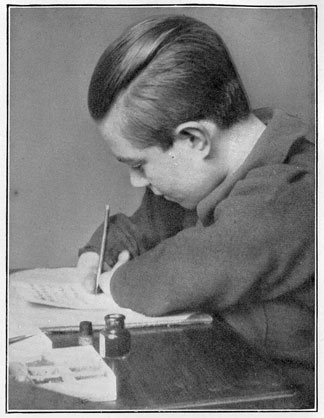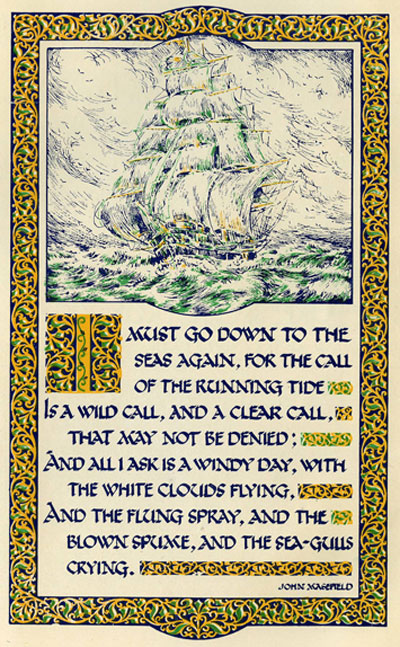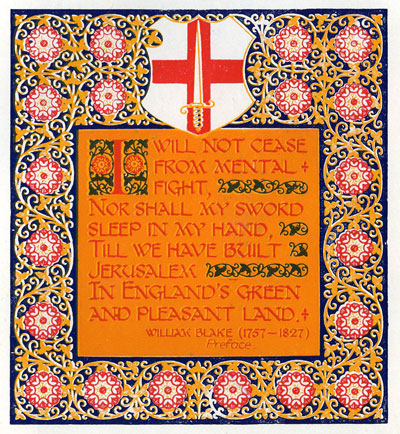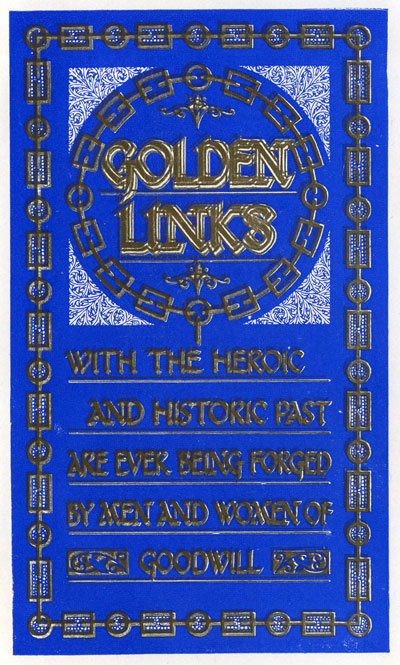John Buchanan:
"The artist without hands"
Inscribed 3,500 scrolls for villages throughout Britain which adopted warships
Between October 1941 and the end of
March 1942, Warships Weeks were organised in cities, towns and villages
throughout Great Britain. The intention was to raise a sum by
investment or deposit in all types of war savings representing the cost
of building one of His Majesty’s ships ranging from the smallest to the
largest vessels. Once the target had been raised the community adopted
the vessel along with its crew and the bond was strengthened by
presentations in recognition of the money raised.
Replicas of the crest of the ship mounted on a wooden shield were
presented by the Admiralty to the Councils and a plaque bearing the
crest of the town or city was presented by
the Council to the adopted vessel. Where Rural and Urban Councils
supported the fund raising efforts of a municipal borough or city they
received a separate plaque from the Admiralty. The villages in the area
covered by the rural councils were presented with a printed scroll
bearing the standard Admiralty anchor but with the name of the parish,
the date of the Warship Week and the name of the ship adopted inscribed
on the scroll. These were intended for framing and hanging in the
village hall or a similar place where they would be on public view.
Most of these were done by John Buchanan, "the artist without hands", whose story is told by Cecil F. Walpole in "Artist without Hands: a memoir of John Buchanan"
(London: Epworth Press, 1953), a slim 48 page hardback with many
coloured plates demonstrating John Buchanan's ability at producing
illuminated manuscripts despite his lack of hands. Cecil Walpole was a
former General Secretary of the National Children’s Home and this
account of John Buchanan's life is largely based on his book.
**************
 John
Buchanan was born in Glasgow in 1908 but his parents moved south and he
spent his childhood in a Hampshire village near Portsmouth. His father
had served in the Boer War and lost a leg which made it difficult for
him to support a wife and five chilren. His wife went out to work in a
laundry near their home but earned very little and her husband was
frequently unemployed.
John Buchanan was born without
hands. He had two imperfectly formed fingers where his left hand should
have been and the right arm finished with a stump at the elbow. Friends
suggested that he should be taken into the care of the National
Children's Home and when he was nine he went to their Branch for
Crippled Children at Chipping Norton in the Cotswalds.
John
Buchanan was born in Glasgow in 1908 but his parents moved south and he
spent his childhood in a Hampshire village near Portsmouth. His father
had served in the Boer War and lost a leg which made it difficult for
him to support a wife and five chilren. His wife went out to work in a
laundry near their home but earned very little and her husband was
frequently unemployed.
John Buchanan was born without
hands. He had two imperfectly formed fingers where his left hand should
have been and the right arm finished with a stump at the elbow. Friends
suggested that he should be taken into the care of the National
Children's Home and when he was nine he went to their Branch for
Crippled Children at Chipping Norton in the Cotswalds.
"Those who knew
him before he went to Chipping Norton declared that as a little boy he
had run rather wild, but in his new environment his mind and chracter
developed in a wonderful way and he soon began to to exercise a real
and gracious influence on other boys and girls. His cheerful outlook
and keen sense of humour speedily made him a favourite with everyone."

 WARSHIP WEEKS
WARSHIP WEEKS John
Buchanan was born in Glasgow in 1908 but his parents moved south and he
spent his childhood in a Hampshire village near Portsmouth. His father
had served in the Boer War and lost a leg which made it difficult for
him to support a wife and five chilren. His wife went out to work in a
laundry near their home but earned very little and her husband was
frequently unemployed.
John
Buchanan was born in Glasgow in 1908 but his parents moved south and he
spent his childhood in a Hampshire village near Portsmouth. His father
had served in the Boer War and lost a leg which made it difficult for
him to support a wife and five chilren. His wife went out to work in a
laundry near their home but earned very little and her husband was
frequently unemployed. 

